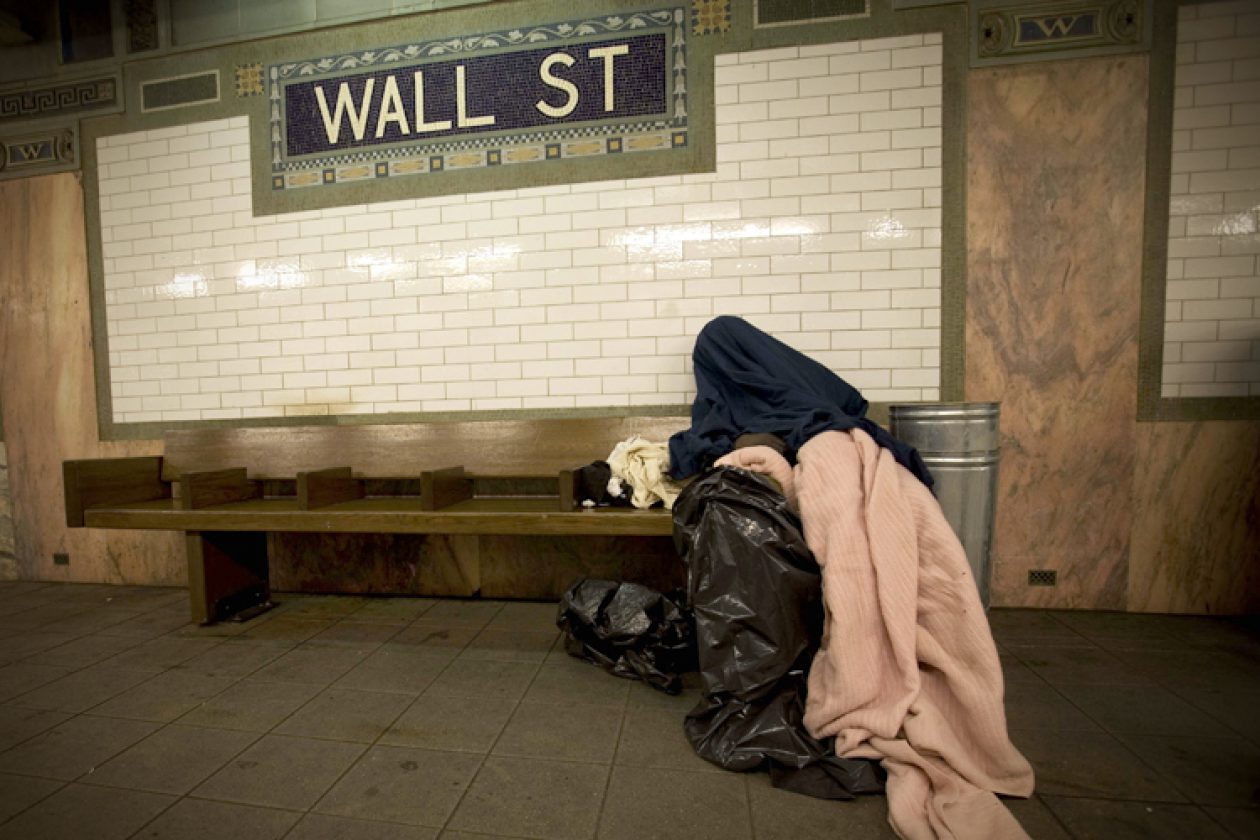History of Homelessness in New York
The Great Depression in the 1930s led to the development of homeless settlements in the country’s major cities—or “Hoovervilles,” an allusion to the then U.S. President Herbert Hoover. Living in tents and shacks, these communities rapidly developed In New York City, especially in Central Park’s then empty reservoir and Riverside Park, but disappeared along with the crisis. During the next half century the homeless population encompassed a narrow band of society, its numbers fluctuating as the economy cycled. Various studies across the country painted a similar portrait of the homeless. Out-of-work white males, often plagued by ill health, alcohol or drug addictions, made up for the greatest part of this socially quarantined community. A large majority was still confined to “skid rows” and the Bowery remained New York’s homeless hub, where men would be found sleeping in the streets, the subway or tiny, windowless, 90-cents-a-night hotel rooms. Until the decriminalization of public drunkenness in 1966, police stations also became the shelter for hundreds of homeless people on any given night.
Explaining a Shift
Many New Yorkers would say that the 1980s, despite acute racial tensions, were a decade of overall prosperity. And they wouldn’t be wrong; while most of the country saw its unemployment figures soar, the city enjoyed a pleasant boom in its economy. But it’s also during those years that contemporary homelessness emerged. There are different theories as to why homelessness first soared in the 1980s. Among the most popular ones are the release of mentally ill patients from large state facilities, and trends in substance abuse. Another scenario, that of a rising homeless population still mostly consisting of alcoholics and drug users, isn’t consistent with history either. The emergence of crack, which flooded the streets of New York City in the mid-1980s, certainly led more than one of its victims to end up in the shelter system. But most of the people affected by “rock” were single adults, not families, and the end of the epidemic a few years later did not bring the expected relief to the shelter system.
Three Mayors React
In the 1980s, homelessness became a much more visible problem, with countless of people sleeping in the streets, on church steps and in public squares. In the midst of this explosion, state courts compelled New York City to provide shelter for the homeless, as the landmark 1981 case Callahan vs. Carey established in—and only in—New York City a right to shelter. The Callahan case has been a major force shaping homeless policy in New York City for 30 years. Over that same period, New York City mayors have tried to tackle this unprecedented and growing problem. Sometimes their policies focused only on the more dire symptoms or most visible signs of homelessness.
Giuliani
During the Rudy Giuliani administration, police conducted searches in public places, arresting homeless New Yorkers and taking them to shelters.
Koch
Koch did set aside 10 percent of the units created under his ten-year, $5 billion affordable housing plan for shelter residents. But he recalibrated the shelter system to use barracks-style dormitories rather than more comfortable hotel placements in part to make the wait for permanent housing less comfortable—and therefore, the logic went, weed out people who had other housing options and were gaming the system for a free place.
Dinkins
In 1991, the New York Times reported that within six weeks of taking office, Dinkins had shelved some of his ambitious homeless policy plans. A rise in the shelter population during Dinkins’ term known to policy wonks as the “Dinkins Deluge” is attributed by some to the initial generosity of Dinkins’ permanent housing policy—which may have attracted people to the system—and by others to the stinginess of that same policy, which some believe did not respond to rising need during the 1990-91 recession.
An Unexpected Agenda
Soon after Bloomberg’s first election in 2002, city surveys showed that the number of homeless families was on the rise again. For months the media covered the fate of homeless families reduced to sleeping on the floor of the Emergency Assistance Unit, waiting to be placed in a shelter. So the mayor’s plan to significantly reduce the shelter population two years later came as a surprise to many, even those who had long been engaged with politics and the homeless. With the start of the 21st Century, also came dramatic transformations that have directly improved the services available for homeless New Yorkers across the five boroughs. Today, families at the state-of-the-art Prevention Assistance & Temporary Housing (PATH) intake center receive placements the same day they apply and benefit from an array of services offered on the premises. In addition, the City has renewed its focus on families in shelter, specifically concentrating on the needs of children, and seeking to minimize disruptions in their lives. Everyday, New Yorkers in shelter and on the streets overcome homelessness with the help of DHS and its non-profit providers. However, the agency also employs extensive homelessness prevention efforts through its community-based Homebase program. Offering a comprehensive portfolio of services and programs, New York City addresses the issue of homelessness head-on, always meeting its legal and moral obligations to assist those in need.



